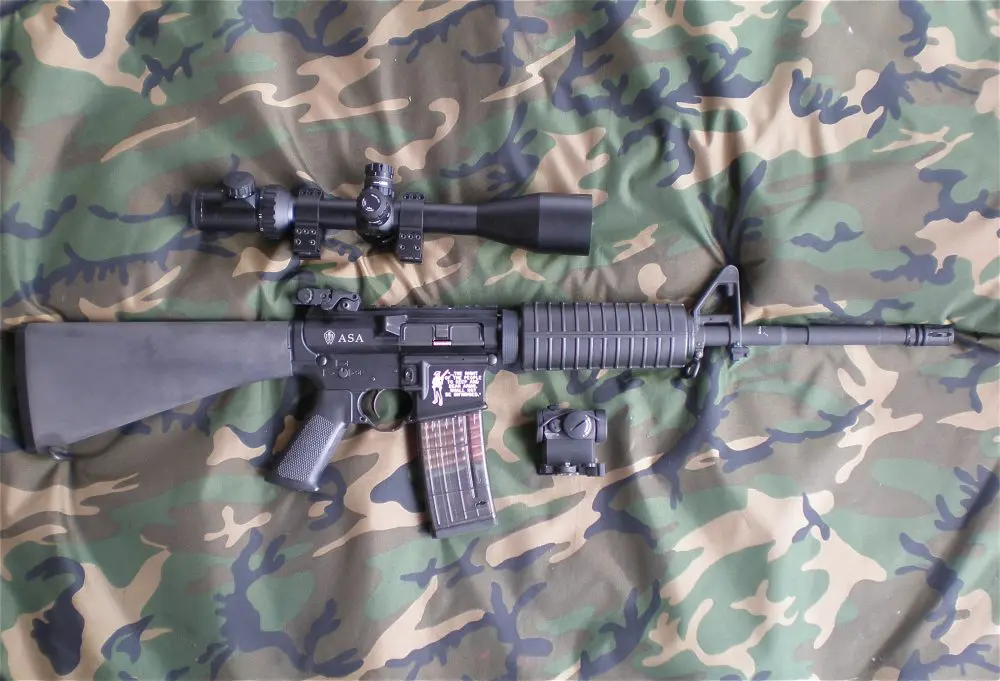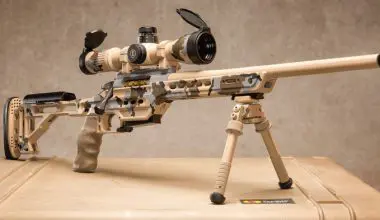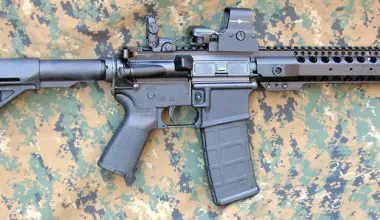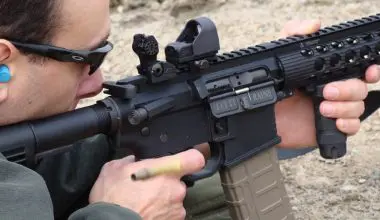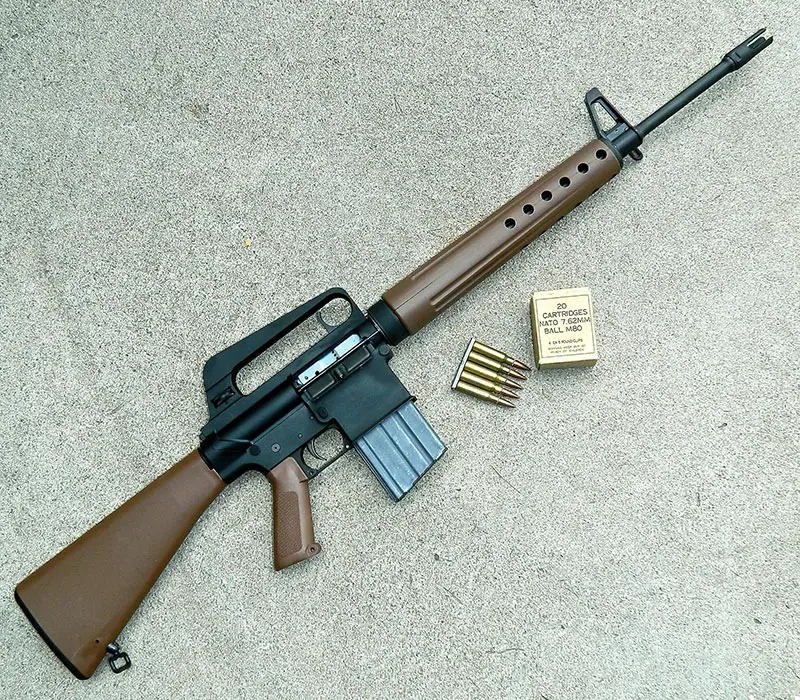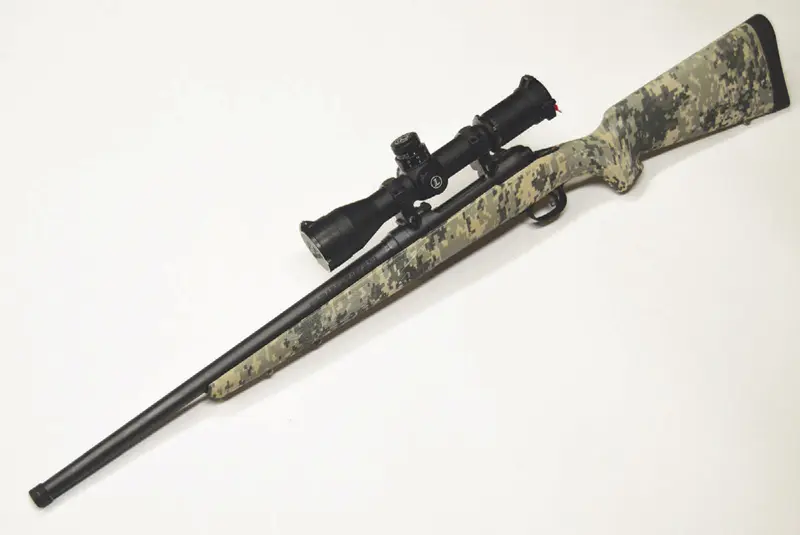
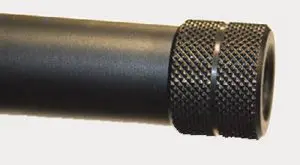
THE first time I came across the Savage line of rifles was when I purchased a 112V single shot in .220 Swift from a pawn shop at Ft. Bragg when I was stationed there with the 82nd Airborne Division in the early 1980s. I took that rifle on quite a few hunts for woodchucks on a friend’s farm in Virginia. I also used it as a project rifle when I attended the Colorado School of Trades gunsmithing program.
When I bought that rifle, it already had a 20X Unertl scope mounted. It was big, bright and had very precise 1/8th minute clicks. When I zeroed it at 200 with the factory Remington 55-grain hollow points, it gave me the ability to go from 100 to 300 yards with a dead-on hold on a groundhog-sized target, otherwise known as a point-blank zero.
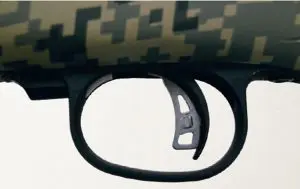
Having built and tested tactical rifles for many years for the DoD using the ubiquitous Remington M700 action, I was eager to evaluate the Savage Model 10 Precision Carbine.
Table of Contents
M10 PRECISION CARBINE
The M10 Precision Carbine I chose to review was chambered for .223 Remington, but it is also available in .308 Winchester.
When I received the rifle from the factory and removed it from the box, the first things I noticed were the fit and finish of the rifle. The metal surfaces have an even, non-reflective matte-black finish with the Savage
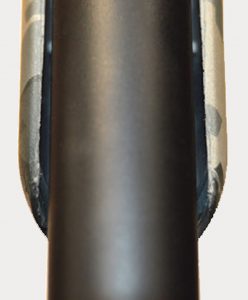
name placed onto the bolt body. The bolt handle is an oversized tactical-style knob with a smooth surface that is easy to manipulate but won’t snag on objects. The bolt is very easy to cycle with gloves.
The rifle has a 20-inch barrel that starts at 1.040 at the receiver and tapers down to .750 at the muzzle, with the last half inch threaded for a suppressor. The muzzle is fitted with a knurled end cap to protect the threads from damage.
The barrel is button rifled and has a 1:9 twist with six lands and grooves that proved to handle a wide variety of bullet types and weights. Firing the rifle with and without muzzle cap showed no change in the point of impact. The overall rifle weighs eight pounds and is about 40.5 inches long and nicely balanced.
ACCUSTOCK
The rifle is equipped with the Savage AccuStock and has a digital camo pattern. The stock has a comfortable no-slip, one-inch-thick black recoil pad attached, and has three sling swivel studs installed, with the front two studs attached to the aluminum rail installed into the stock forend. This is essential when deploying the rifle with a sling and bipod.
The AccuStock on the rifle I evaluated was in a sporter stock configuration, with a somewhat slim forend and a fair amount of drop at the comb and heel. This is not a bad thing, since a patrol rifle, which is what this rifle is, should be lightweight and portable, and a sporter stock provides those. Target or tactical stocks normally have wide forends, higher combs, adjustable cheek pieces, and other items that aid accuracy and shootability but add weight.
One concern when using a sporter stock in a tactical or varmint rifle is that the forend, being thinner, can flex when shooting off a bipod or rest. When this happens, the point of impact can be affected because the forend will slap against the barrel during firing.
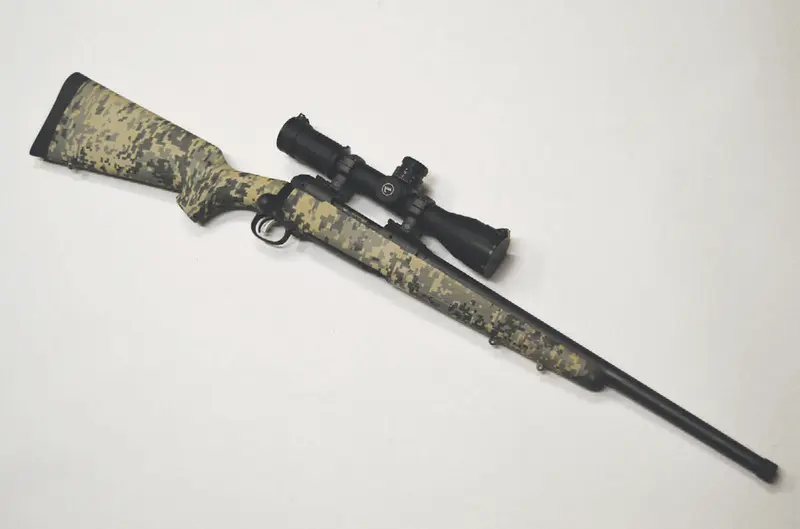
The barrel should always be free floating from either the front of the receiver ring or, if the rifle is glass-bedded, I usually extend the bedding two inches forward of the receiver ring out onto the barrel, which has the effect of dampening the barrel during firing. Some builders use this method, while some subscribe to the technique of free floating the entire length of the barrel.
The AccuStock on the Savage rifle alleviates this by adding a “stiffener” to the forend. This is an aluminum section that runs the length of the forend and keeps the forend from flexing. The stock also applies pressure vertically and horizontally when screwed to the barreled action, which helps accuracy.
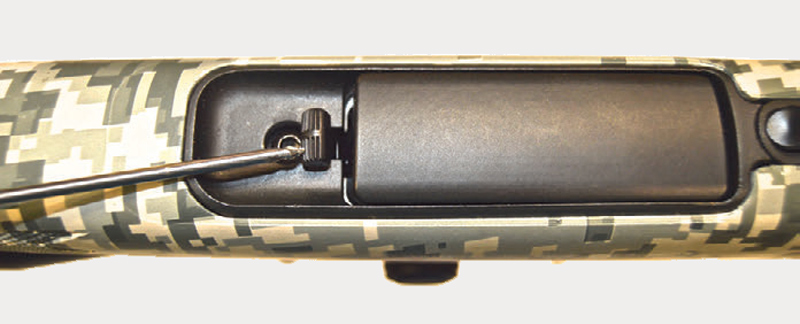
ACCUTRIGGER
The trigger on the rifle is Savage’s AccuTrigger, a single-stage trigger that uses a protruding blade that has to be depressed prior to applying pressure to the trigger. If the trigger is depressed before the blade is, the rifle’s trigger disengages and goes into almost a half-cock mode. If this happens, the bolt has to be lifted, which will reset the trigger mechanism. This makes for a very safe trigger mechanism and lets the Savage engineers set the trigger’s weight of pull to a very low level.
The trigger pull was measured at an average of 2.6 pounds—very light for a factory trigger. I did quite a bit of dry firing with the trigger to get accustomed to it prior to range testing, and did a fair amount of range testing as well. I found the Savage trigger to be excellent, with no discernible creep, and it broke very crisp and light.
My only complaint about the Savage trigger, and admittedly this is splitting very fine hairs, is that it did have a little too much overtravel for my liking. Too much overtravel is a detriment to accuracy because you want the trigger to stop its rearward movement at the instant the trigger disengages, to prevent the shooter from influencing the shot as the trigger disengages.
Having the trigger set with a little overtravel is a good thing from a liability standpoint, as it ensures the rifle will fire if the trigger mechanism gets a little dirt or powder fouling in it.
The M10 Precision Carbine comes with a four-round detachable box magazine.
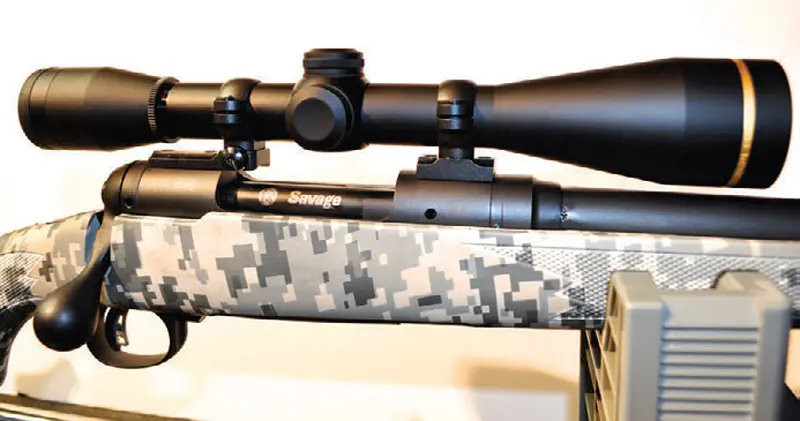
OPTICS
I selected two Leupold scopes for this project. The first was the new Mark 6 tactical scope, which combines light weight and a lot of features into a small package—perfect for the smaller, lighter Savage patrol rifle.
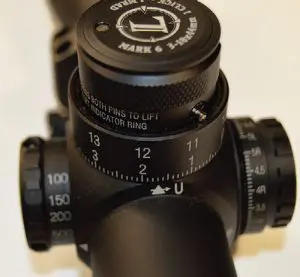
The Mark 6 comes in a variety of models and configurations. I chose the 3-18X44, which comes with a 34mm main tube. The scope is only 12 inches in length overall and weighs just 23.6 ounces with flip-up scope covers installed. The Mark 6 scope features a standard Mil-Dot reticle, and the image was extremely bright even as the light began to dim during my shooting session.
The Mark 6 has the new M5B2 Pinch and Turn Adjustment. This ring unlocks when you pinch the ring and provides 1/10 mil adjustment per click, and 20 mils of total adjustment. I found the rings easy to use, even with gloves on. The scope also has a lockable fast-focus eyepiece and the traditional side focus knob for parallax adjustment. The Mark 6 scope has 100 MOA of elevation adjustment and almost four inches of eye relief.
The second scope I evaluated for the Savage M10 was the fixed-power FX-3 scope, an excellent choice on a rifle like this. It features an Argon/Krypton gas-filled one-inch diameter main tube, with a fixed 6X magnification—ideal in an urban environment.
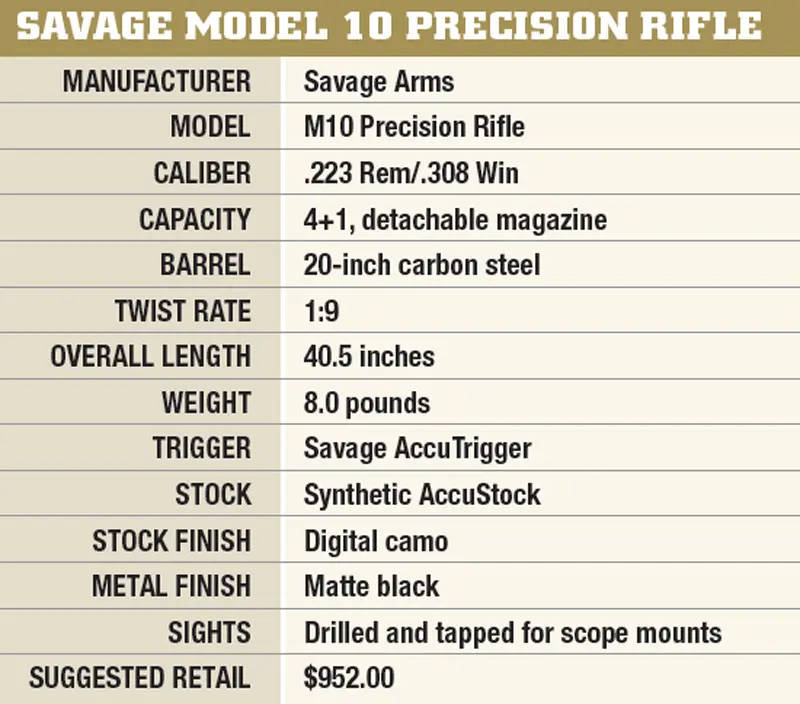
The scope features the LR Duplex reticle, which has the traditional Duplex reticle that most hunters are familiar with, along with additional dots on the lower vertical crosshair below the horizontal crosshair, which are used for aiming and range estimation. The scope has easy to use 1/4 MOA adjustments for windage and elevation.
For the first range session, I started with the Mark 6 3-18 scope with a pair of Mark 4 steel bases and rings, torqued the rings in place and headed to the range.
SHOOTING THE M10
I had a variety of ammunition to test with this rifle, and all testing was performed with the excellent Oehler 35P chronograph that always gives me consistent results.
Right from the factory, the M10 is capable of sub-MOA accuracy when paired with the right ammunition. All groups I shot were five-shot groups at 100 yards. I wish I’d had time to test this rifle more extensively with the ammunition provided, since I think it’s capable of even better accuracy than the results I got. Having said that, the rifle shot several brands and bullet weights very well, and really did not do badly with anything we fed it.
I had a total of nine loads from five different manufacturers, including two from Federal, two from Hornady, two from Speer, one from Nosler, and two from Black Hills. Bullet weights ranged from 55 to 75 grains.
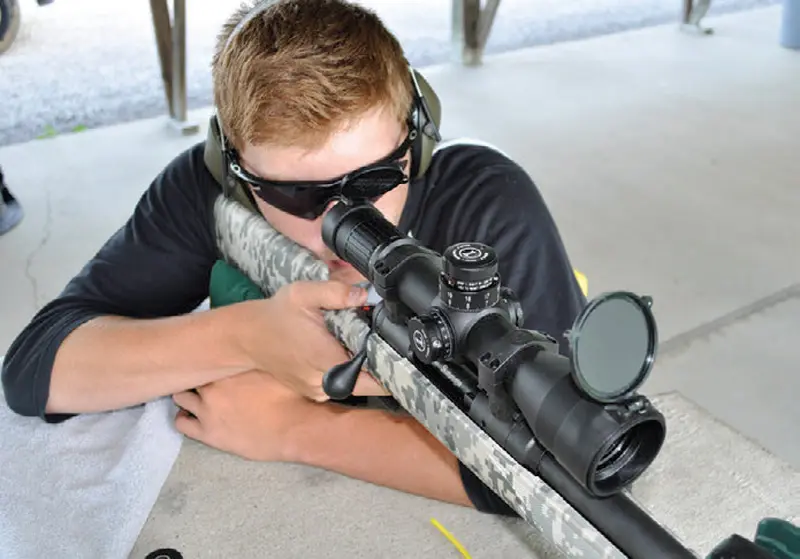
Velocity-wise, the Oehler told the tale, with Federal’s American Eagle giving the lowest standard deviation (SD) readings with 10 feet-per-second (fps), and the Speer 55-grain having the highest average velocity at 3,025 fps. Even though the Hornady 55-grain Varmint Express load had the highest SD at 66 fps, it turned in the best group of the day with a five-shot 100-yard group of .417 inch.
Other loads that shot under an inch were Federal 62-grain Tactical at .793, Hornady 72-grain BTHP at .773, Speer 64-grain at .776, Nosler 63-grain at .689, and Black Hills 75-grain at .987. No load shot above a 1.202, which is darn good accuracy from an untuned factory rifle.
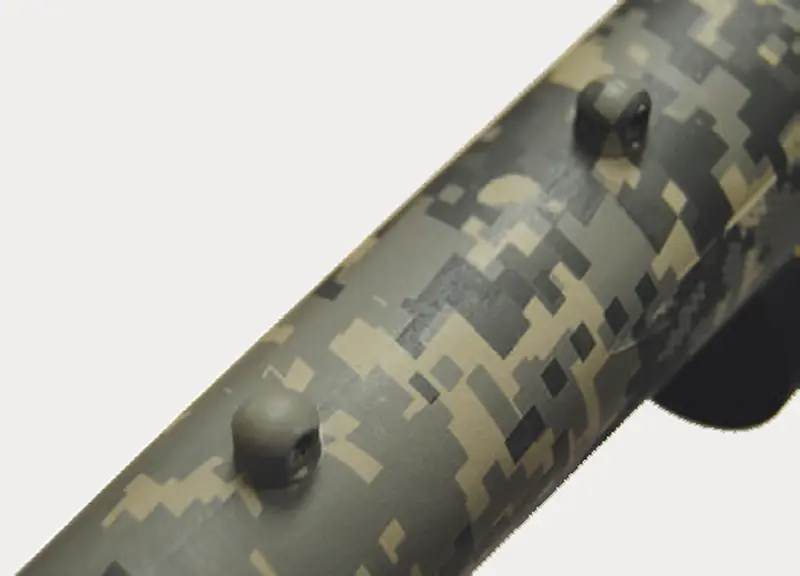
for a bipod, the other for a sling.
One item that really made the testing easier was the Bushnell Elite tactical spotting scope. Clear and bright with magnification out to 40X, it made seeing those .22-caliber holes much simpler.
After testing with the Mark 6 scope, I mounted the FX-3 6X scope onto the Savage with Leupold two-piece steel bases and rings. I shot two loads with this scope but unfortunately didn’t have time for more. I was able to get the 75-grain Hornady to shoot into 1.509 inches and the Federal 62-grain BSP into .837 at 100 yards. Again, these are very respectable results from an untuned factory rifle/ ammo combination.
SUMMARY
All in all, the Savage rifle turned in a great performance when married to the excellent Leupold optics and fed with quality ammunition. Any agency or private citizen looking to purchase a bolt-action patrol-type rifle in .223 should give the Savage Model 10 Precision Carbine a serious look.
